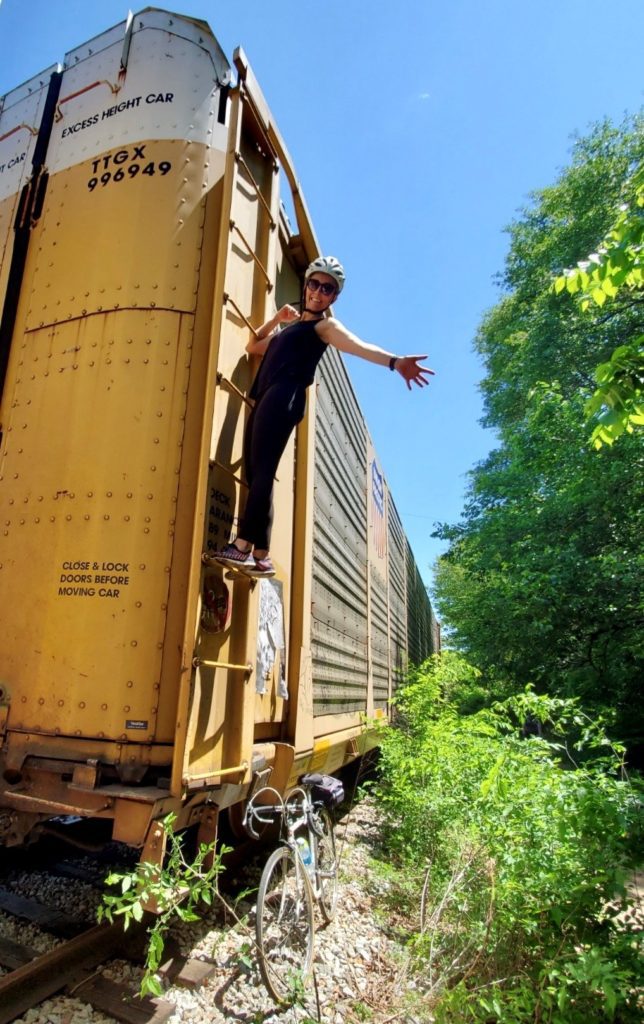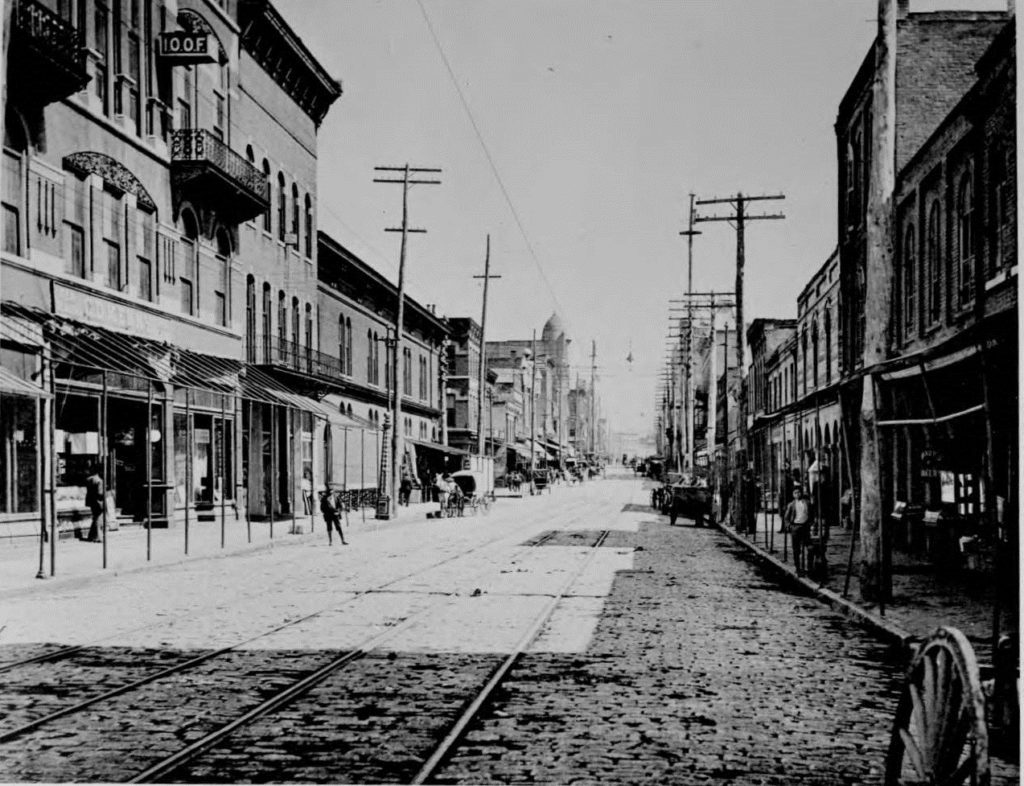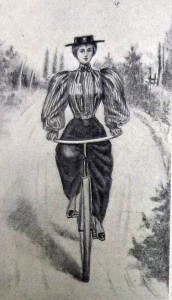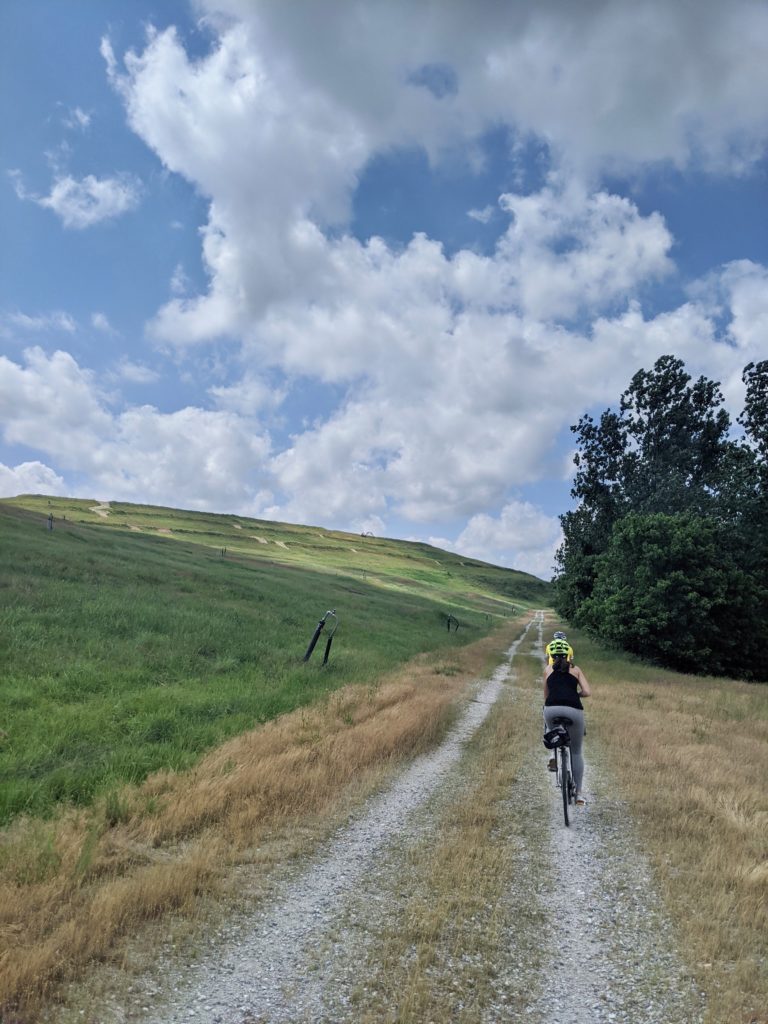We learned all about Atlanta’s cycling history from Victoria Lemos, a long-time history enthusiast and creator of the podcast Archive Atlanta. In her podcast, she thoughtfully delves into Atlanta’s complex history, tackling everything from the region’s culinary history to the Chinese community in Atlanta to yes, even bicycles!

Not only does she know a thing or two about what Atlanta’s bicycling has looked like over the decades, she also has first-hand knowledge! In addition to running the Archive Atlanta podcast, Victoria also works as a bike tour guide at Bicycle Tours of Atlanta. She got started as a walking tour guide and recently has gotten into the biking game!
Victoria says that biking is actually her favorite way to tour the city’s history. While walking is her favorite option pace-wise, bike touring gives just enough extra mobility to see more sites and travel to different elevations during a single tour.
So, does riding your bike actually let you see the city any differently?
Victoria says absolutely. Roads, especially highways, can be insulated from the city’s historic buildings and sites, and you miss out on the natural elevation changes of Atlanta. Before the city of Atlanta had a sewer system, the wealthy in Atlanta moved to the areas of the city that were the highest elevations (like Peachtree Street) so that their sewage would drain out of their neighborhoods and down into lower elevations typically populated by the working class. Victoria tells us that you don’t easily notice how that history still exists in neighborhoods today because you don’t notice the distinct elevation separations common between wealthy and poor neighborhoods in your car.
Plus, by biking around the region, you can also experience places that cars can’t get to, such as Duck Pond Park in Peachtree Heights.
Okay but what about Atlanta’s bike history?
The first bicycle club in Atlanta is established in 1869 (then called a velocipede club). It started as an expensive hobby, but the bicycle quickly became a ride that helped to provide mobility for people all around the region. In 1890, local laws segregated streetcars. In protest, black Atlantans boycotted by taking other forms of transportation – including the bicycle.

By 1896, over 1,000 bicycles had been sold in Atlanta. But this was actually somewhat late compared to other cities, in part because the streets and sidewalks of Atlanta were so rough and hard to ride on. The Good Roads club encouraged the city to close Peachtree Street to wagons and cars for a certain period each day so that it could be safe for cyclists. Streets Alive anyone? Not to mention, bicyclists were the original catalysts for paved roads in the city. Cyclists pursued the first paved bike path in 1896, forming the Piedmont Cycle Club.

Of course, we can’t forget the women! Women at the turn of the century were also interested in the world of cycling around this time, though there were never any formal women’s only cycle clubs in Atlanta’s early cycling history. As Victorian-era dresses were cumbersome for riding, the fashion industry evolved to meet the needs of the women cyclists. Women often used this riding skirt, which allowed women to tuck their hems while riding and then let them back down again when they dismounted.

And while adults across the region were biking by the early 1900s, children weren’t biking much until the 1920s, when they began to be seen as toys. However, it wasn’t until 1949 when the first children’s bicycle was produced by Huffy.
In the early 1970s, a biking craze known as the Bike Boom swept the nation, leading bicycle sales to go through the roof. Time reported that nearly 64 million Americans cycled regularly in 1971. The Bike Boom came in part because of growing trends towards health and outdoor recreation. By the time the 1973 oil crisis rolled around, even more people had made the change to cycling as the cost of oil became prohibitive.

In 1996, Atlanta became the first location to host the mountain biking event during the Summer Olympic Games, with the event being held at the Georgia International Horse Park in Conyers.
Want to learn more? Listen to Victoria’s episode about cycling in Atlanta here. And listen to her other episodes to learn all about Atlanta history. You may even be inspired to check out some of the historic sites around the city by bike!
Biketober is happening now! All month long, ride for a minimum of 10 minutes to earn points towards prizes, including drawings for restaurant vouchers, bike gear and more.
To participate, all you have to do is:
For more information and to register, check out ATLBikeChallenge.com


